A mild summer is what those who toil in the sun dream of, and so far those dreams have come true. Which, by writing this out, guarantees that an apocalyptic sun-searing month is sure to come… But for now, we enjoy the cool early morning hours.
It’s almost the middle of the year now, and a good chance to take a look at how things are going at Dew Point.
We made a slew of changes this year — largely for reasons not to do with farming. We’ve been dealing with major repairs to one of our rental houses since Christmas, and as a result, we planned our crops and projects to be as low-maintenance as possible.
So we decided to plant no root crops, which are back-breaking to weed and harvest and require washing/drying time. Sadly, we grew no carrots, beets, or those delicious icicle radishes this year.
We also moved from tried-and-true tomato and pepper varieties to bush plants that were, for us, untested. This meant no labor-intensive trellising (or so we thought) and no shade tunnel, which can be a beast to set up and tear down.
We also tabled construction of a wash station — a planned permanent structure to replace the wire-mesh-on-cinder-blocks system we’ve used to date. Delaying this was fine, though, since a wash station is 98 percent geared toward cleaning the root crops we’re not growing this year anyway.
Now, the upside to all this is that we’re able to try growing some experimental stuff we’ve always wanted to do. So here’s a look at how all the new things are going:
Tomatoes: Let’s start with what’s bound to be the most controversial change. Traditionally we grow three types of tomatoes — sungold cherry tomatoes (nature’s candy, I always say), romas (which don’t sell well but are our favorite for home canning), and a couple types of big slicer tomatoes (the crowd pleasers and undeniably our hero crop). We did none of those this year, opting instead for a tomato called Dwarf Tennessee Suited. They’ll be a lovely deep red with dark stripes and prominent ridges, reminiscent of heirloom varieties. They are a bush crop, and though we thought that would mean less trellising, the plants quickly started falling over when the fruit set in heavy, so we ended up driving in T-posts and stringing tomato line to hold them up anyway. Even though the fruit is still green, they’re already beset by pests and clearly not as resistant to critters as our other varieties. It’s too early to compare yields yet, so stay tuned; we’ll update after we put everything to bed in the fall. But it may well be that we have fewer tomatoes to offer this year than in the past, but that’s OK.
Spaghetti squash: We’ve certainly eaten our share of spaghetti squash in the past, but this is our first attempt at growing it. They’re coming in now, like gangbusters. We harvested 93 pounds last week alone, which is cool, since they’re shelf stable for weeks (or possibly months). And they’re fripping delicious as a pasta substitute, especially after my sister pointed me to the microwave prepping model that means scraping the gourds after just 10 minutes and without firing up the big, ol’ kitchen heatbox. The vines, though have aggressively gotten in the business of the neighboring row, so there’s been a fair amount of maintenance untangling and trimming them.
Ground cherries: These were a curiosity for me. These little guys are related to tomatillos, as you can maybe tell from their husks. But they shell without the same stickiness, and the little fruit inside the pod tastes, well, like its tomatillo cousin got it on with a pineapple. It’s both savory and sweet and delicious straight. The pods are just starting to drop to the ground — which is, handily, how you know they’re ready — and we can’t wait to try dicing some of this up on top of a fish taco. Assuming we can stop nom-nomming them long enough to collect a bowlful. This has been a maintenance-free crop.
Minnesota Midget melons: Since these melons top out about the size of a softball, we’ve taken to calling them “personal pan melons.” They’re akin to cantaloupe in flavor, but maybe even sweeter, and have almost paper-thin skin, so they’re easy to cut. They’re perfect for someone who can’t finish a whole ’loupe in one sitting. They’re just starting to turn the right golden color, and we ate the first two this week. They’re not as productive as we hoped, but part of that might be because of the invading spaghetti squash (see above). We’re hoping to offer these on the shelves at The Food Mill soon.
Popcorn: That’s right, when you think of Georgia, the first crop that comes to mind is … corn, right? Well, as much as we like to eat popcorn, we thought it would be nice to grow it. Jenn found a dwarf popcorn for our zone, though the stalks are still topping out higher than me. The cobs are just starting to show up, so it’s too soon to know about yields. Again, stay tuned.
Peppers: In the past we’ve loved Corno di Toro peppers. They’re beautiful in green, yellow, and red and served as a great, easy-to-grow substitute for bells. But we’ve tried bush varieties of bell, banana and jalapeno this year, and we’ve been extremely happy with what’s on the plants. We’ve just started harvesting these guys. Bananas are on the shelf at The Food Mill now, and we’ll be adding jalapenos and bells next week.
The rest: For market vegetables, we stuck with our Little Leaf cucumbers, which are doing great, and we’ve been harvesting great kale for weeks. Cabbages (both green and purple) are heading up and almost harvestable. Eggplants are just now going from fruit from flower, so they’ll be a few weeks out yet. And we grew a few things just for ourselves this year, including gourmet-blend green beans and some snow peas (both of which are about done), pinto-style dry beans, and sunflowers for seeds. The new fruit trees that make up 2/3rds of our growing space are looking great and on schedule, but aren’t producing fruit yet. Fingers crossed for a prolific 2024 for those guys.
So in raw numbers, we’ve produced a little north of 250 pounds of vegetables since May 1, which may not sound like a whole bunch, but remember most of our inventory is still on the vine and stem. Last year, at this point, we’d harvested 367 pounds, but all the root crops — the turnips, collards, summer squash, etc. — bolstered those numbers.
In previous years, we’ve grown about 1,000 pounds of food through spring and summer, which ain’t bad for a growing space that’s about 1/10th of an acre. Of course, we’re more than a little curious about where our totals will land this year and fully prepared for it to be a little smaller than in the past.
But who knows for sure? If the squash keeps jumping out and we’re up to our ears (heh) in corn, maybe we’ll meet those same totals with less work. Leaving us more time to dance a jig or, I dunno, do the hokey pokey.
That’s what it’s all about.




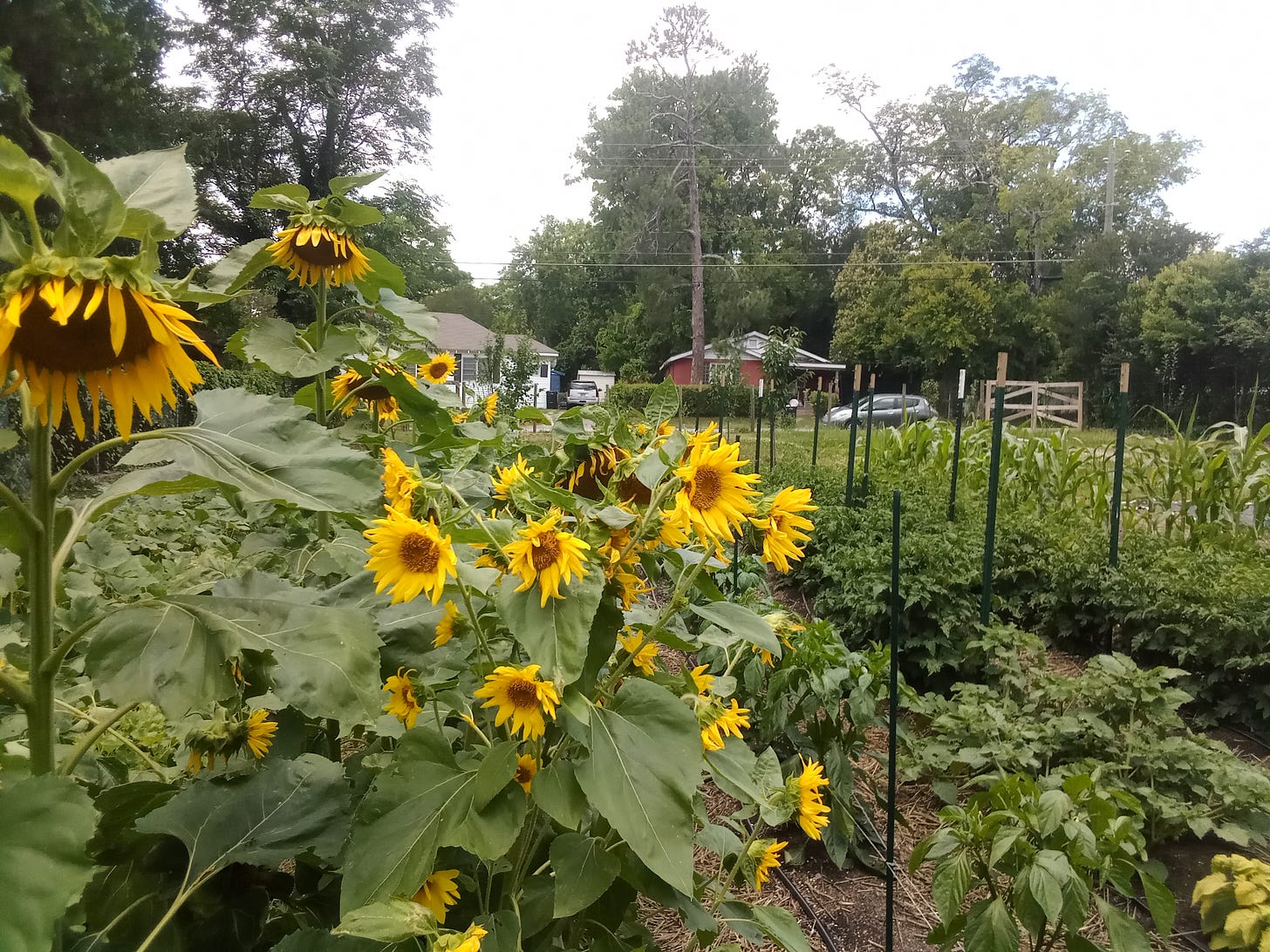
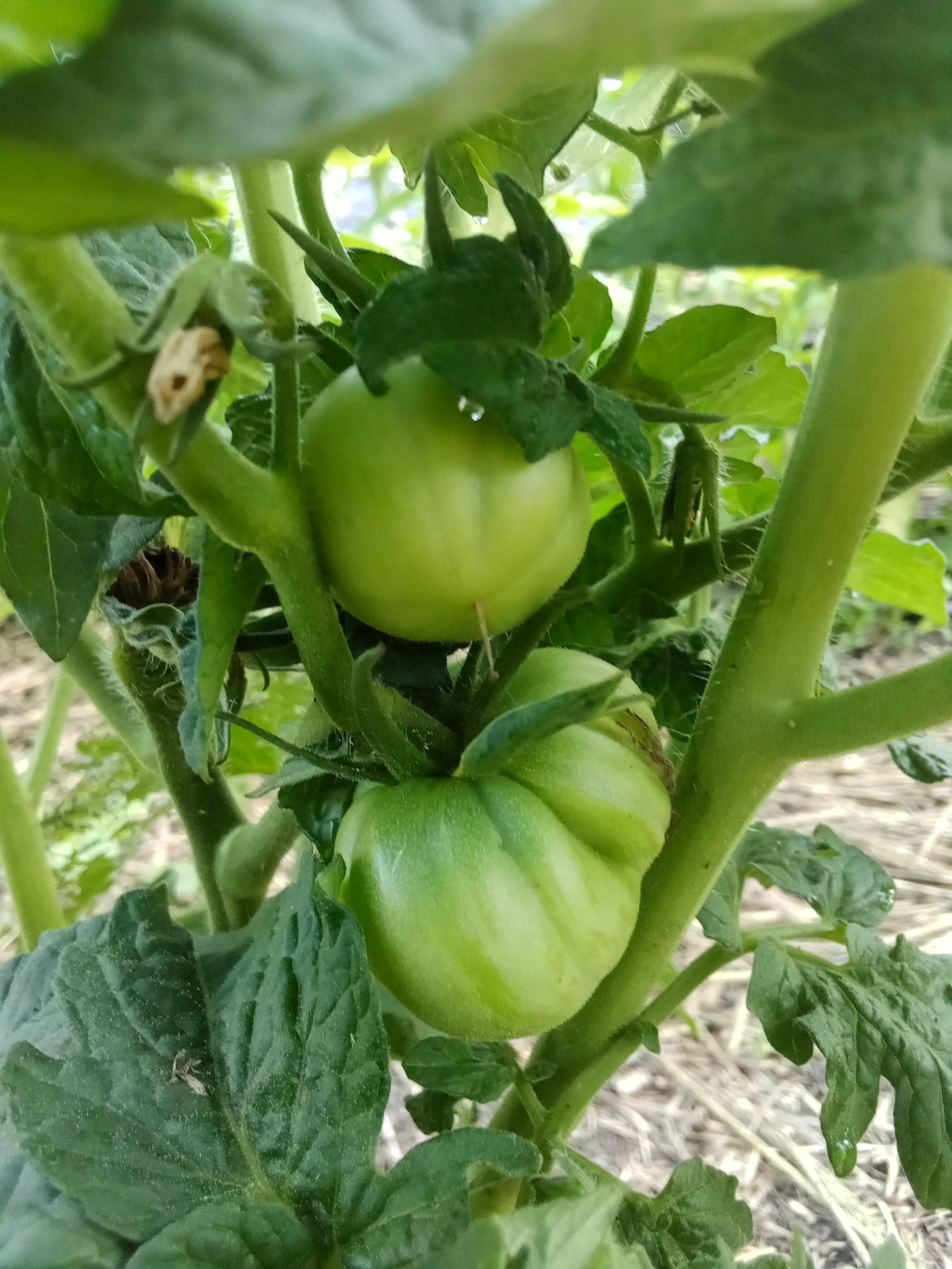
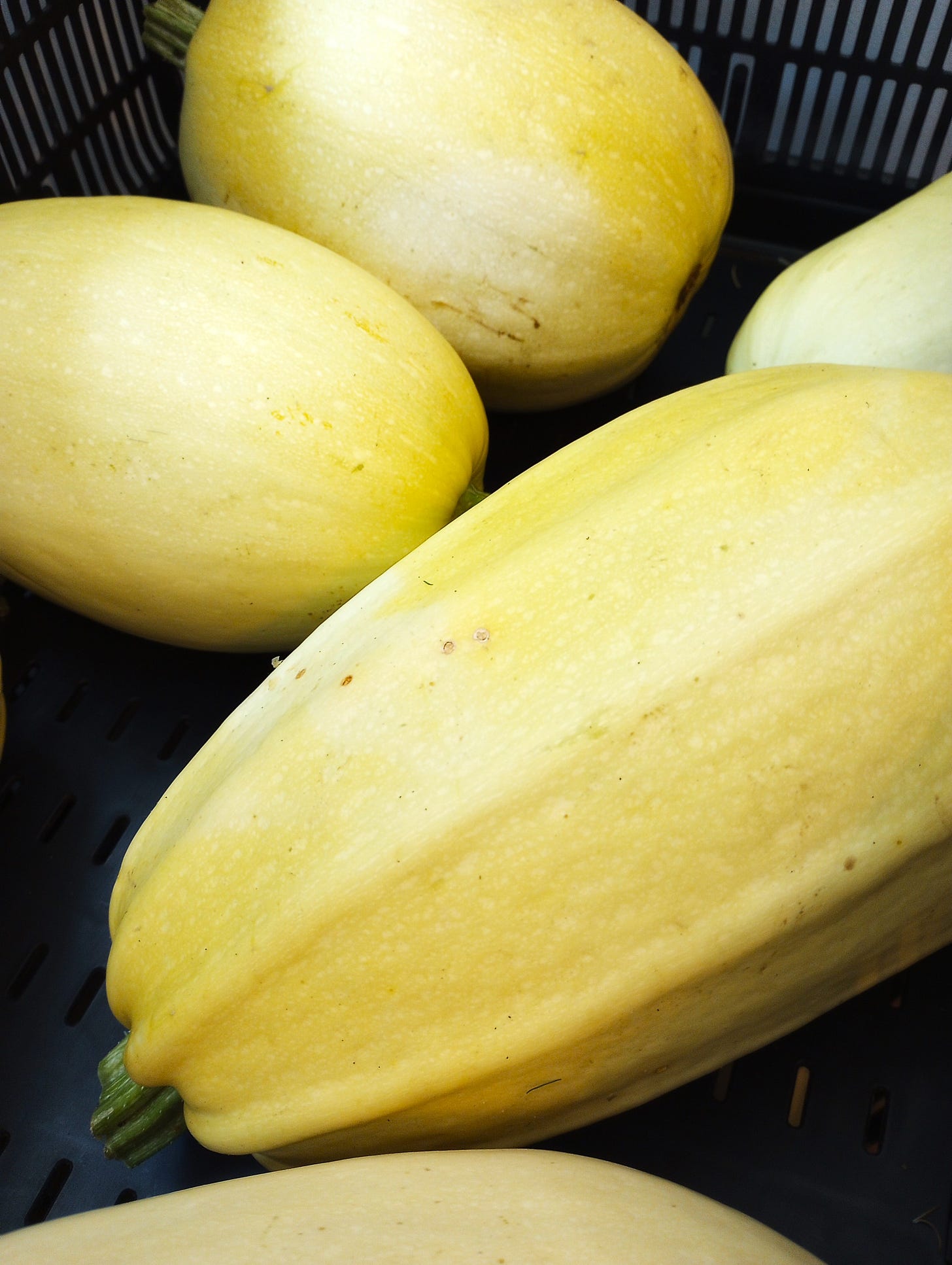
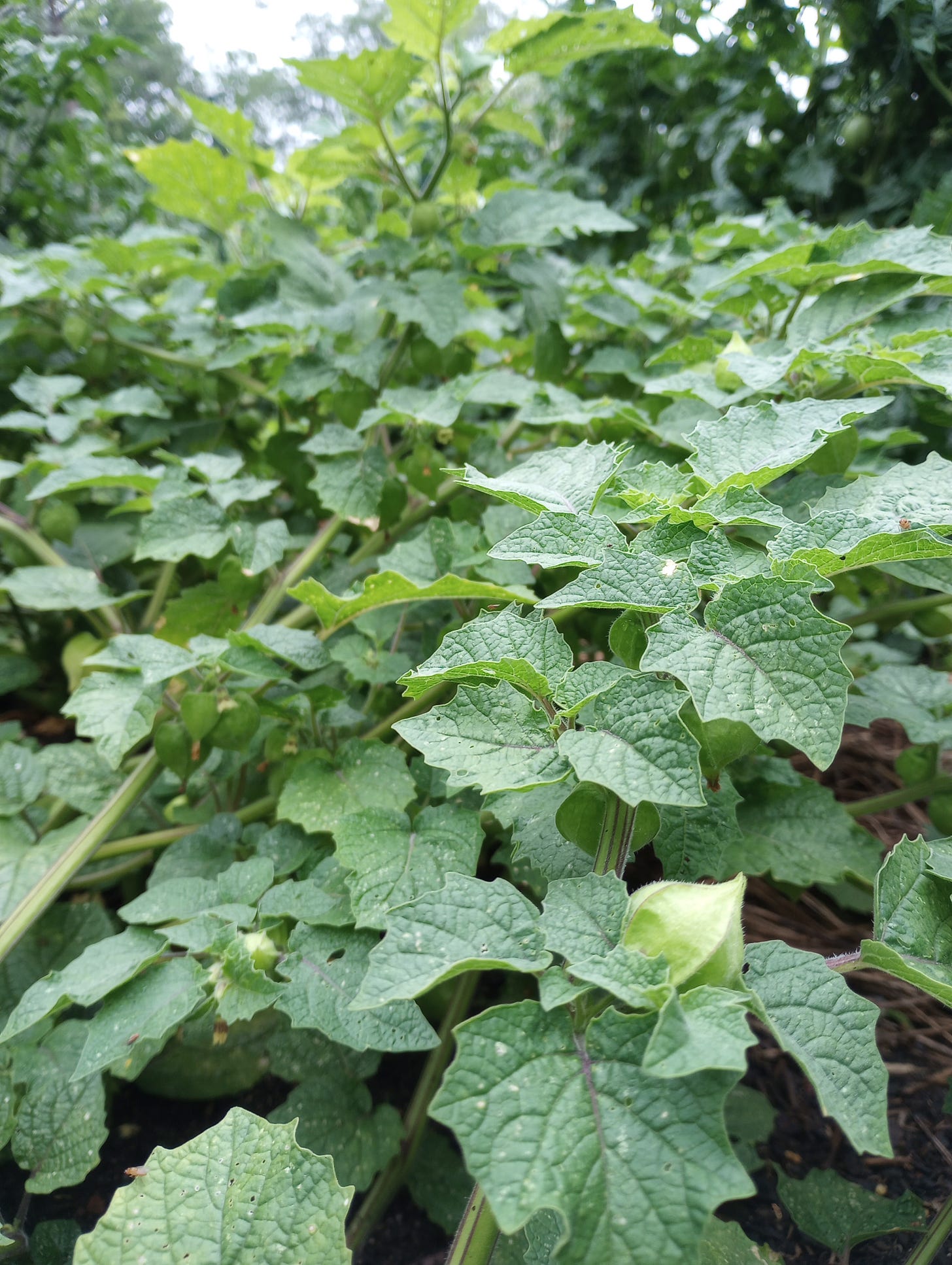


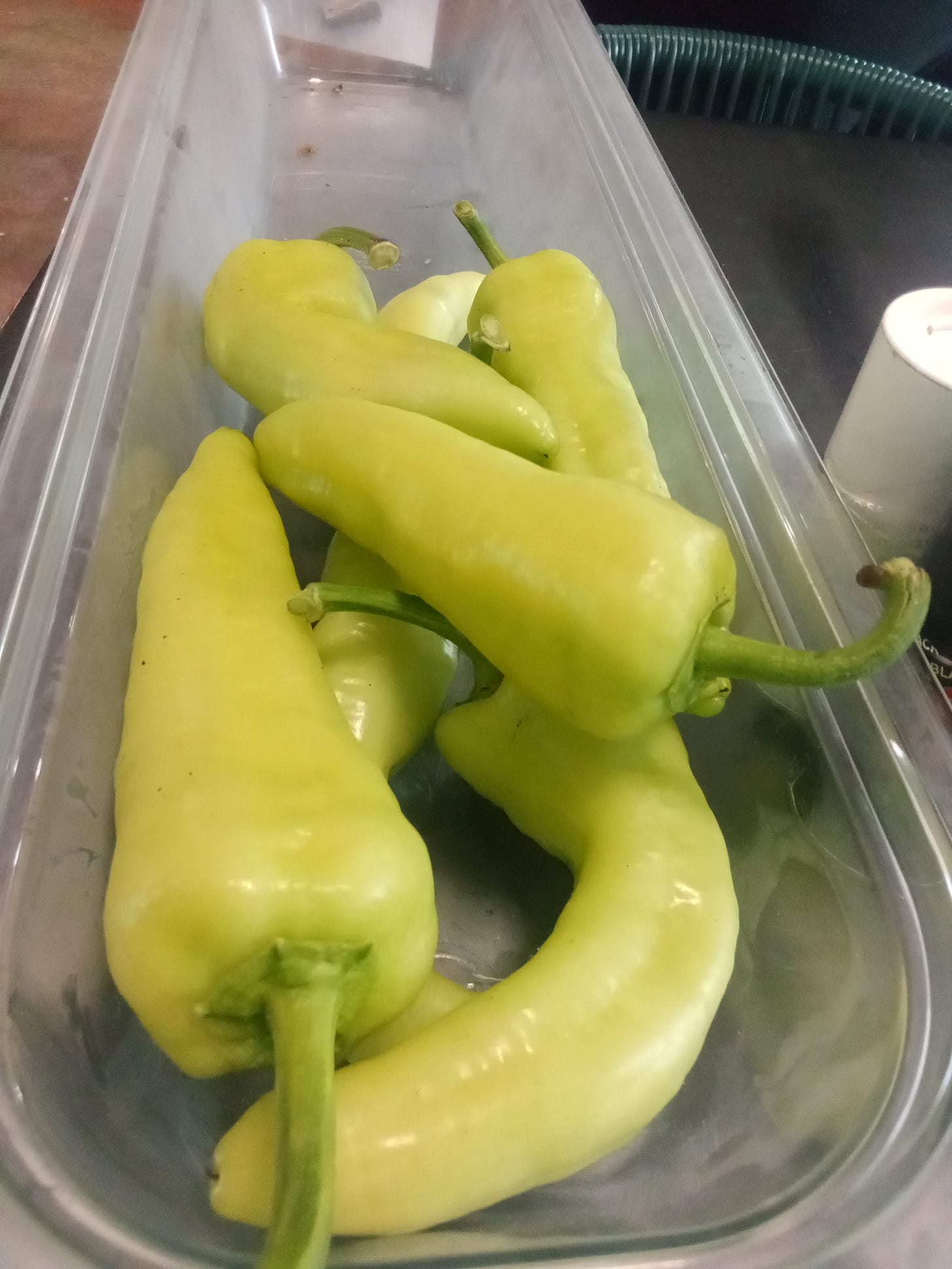
Super excited to try the spaghetti squash! And look at those gorgeous sunflowers!!